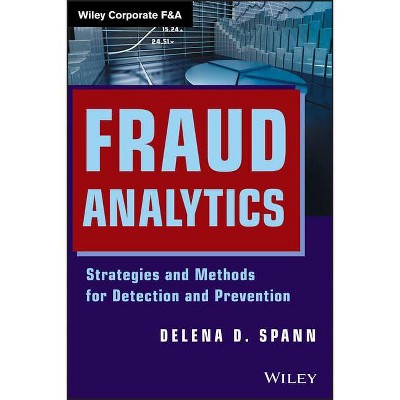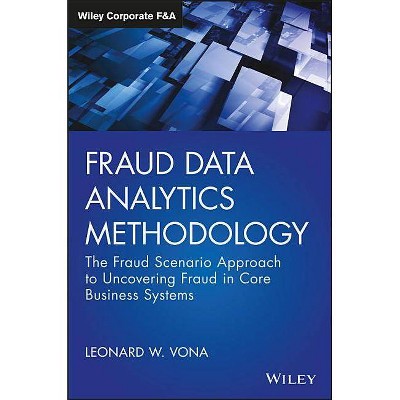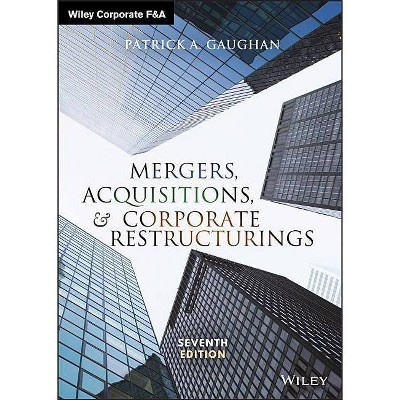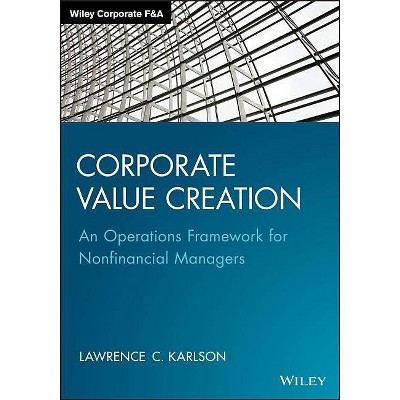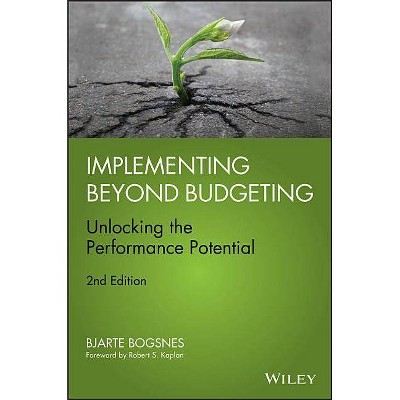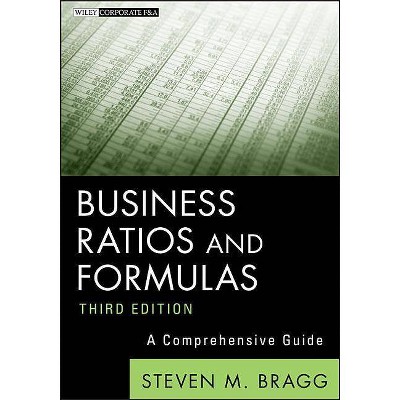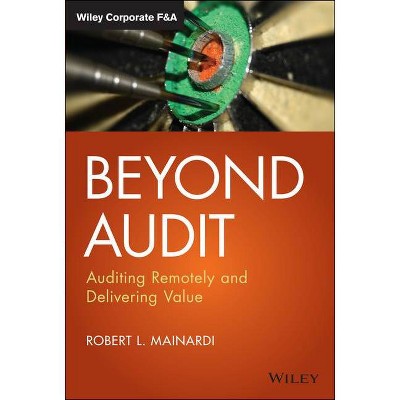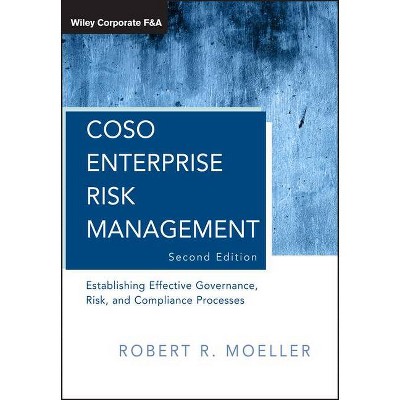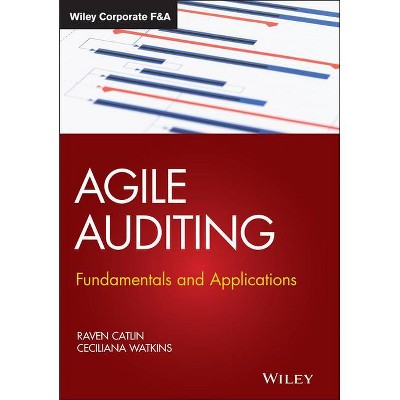Forensic Analytics - (Wiley Corporate F&a) 2nd Edition by Mark J Nigrini (Hardcover)
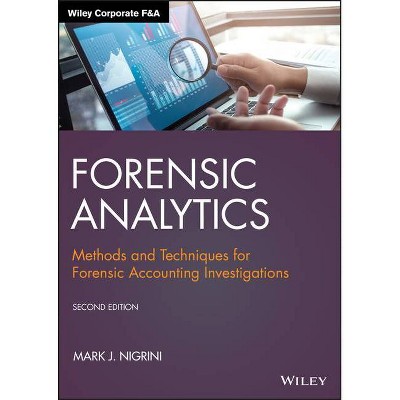
Similar Products
Products of same category from the store
AllProduct info
<p/><br></br><p><b> About the Book </b></p></br></br>"The book will review and discuss (with Access and Excel examples) the methods and techniques that investigators can use to uncover anomalies in corporate and public sector data. These anomalies would include errors, biases, duplicates, number rounding, and omissions. The focus will be the detection of fraud, intentional errors, and unintentional errors using data analytics. Despite the quantitative and computing bias, the book will still be interesting to read with interesting vignettes and illustrations. Most chapters will be understandable by accountants and auditors that usually are lacking in the rigors of mathematics and statistics. The data interrogation methods are based on (a) known statistical techniques, and (b) the author's own published research in the field. New to this edition are: Updates to Windows and Microsoft Office R, which is now a viable data analytics product. New fraud cases There are many published books on data mining, which is defined as the analysis of (large) data sets to find unsuspected relationships, and to summarize the data in novel ways that are both understandable and useful to the data owner. The results of such analyses could be sales predictions or discovering previously unknown patterns and rules. Data mining involves using the data for some specific purpose (often tied to marketing) but typically has no fraud detection motive. Yet, data mining can be a valuable tool to detect errors and anomalies that can lead to the discovery of fraud"--<p/><br></br><p><b> Book Synopsis </b></p></br></br><p><b>Become the forensic analytics expert in your organization </b><b>using effective and efficient data analysis tests to find anomalies, biases, and potential fraud--the updated new edition</b></p> <p><i>Forensic Analytics</i> reviews the methods and techniques that forensic accountants can use to detect intentional and unintentional errors, fraud, and biases. This updated second edition shows accountants and auditors how analyzing their corporate or public sector data can highlight transactions, balances, or subsets of transactions or balances in need of attention. These tests are made up of a set of initial high-level overview tests followed by a series of more focused tests. These focused tests use a variety of quantitative methods including Benford's Law, outlier detection, the detection of duplicates, a comparison to benchmarks, time-series methods, risk-scoring, and sometimes simply statistical logic. The tests in the new edition include the newly developed vector variation score that quantifies the change in an array of data from one period to the next. The goals of the tests are to either produce a small sample of suspicious transactions, a small set of transaction groups, or a risk score related to individual transactions or a group of items.</p> <p>The new edition includes over two hundred figures. Each chapter, where applicable, includes one or more cases showing how the tests under discussion could have detected the fraud or anomalies. The new edition also includes two chapters each describing multi-million-dollar fraud schemes and the insights that can be learned from those examples. These interesting real-world examples help to make the text accessible and understandable for accounting professionals and accounting students without rigorous backgrounds in mathematics and statistics. Emphasizing practical applications, the new edition shows how to use either Excel or Access to run these analytics tests. The book also has some coverage on using Minitab, IDEA, R, and Tableau to run forensic-focused tests. The use of SAS and Power BI rounds out the software coverage. The software screenshots use the latest versions of the software available at the time of writing. This authoritative book: </p> <ul> <li>Describes the use of statistically-based techniques including Benford's Law, descriptive statistics, and the vector variation score to detect errors and anomalies</li> <li>Shows how to run most of the tests in Access and Excel, and other data analysis software packages for a small sample of the tests</li> <li>Applies the tests under review in each chapter to the same purchasing card data from a government entity</li> <li>Includes interesting cases studies throughout that are linked to the tests being reviewed.</li> <li>Includes two comprehensive case studies where data analytics could have detected the frauds before they reached multi-million-dollar levels</li> <li>Includes a continually-updated companion website with the data sets used in the chapters, the queries used in the chapters, extra coverage of some topics or cases, end of chapter questions, and end of chapter cases.</li> </ul> <p>Written by a prominent educator and researcher in forensic accounting and auditing, the new edition of <i>Forensic Analytics: Methods and Techniques for Forensic Accounting Investigations</i> is an essential resource for forensic accountants, auditors, comptrollers, fraud investigators, and graduate students.</p><p/><br></br><p><b> From the Back Cover </b></p></br></br><p>The revised and updated <i>Second Edition</i> of <i>Forensic Analytics</i> offers an essential guide to detecting accounting fraud, biases, and errors in financial data. The author--a noted expert on the topic--explores the methods and techniques that investigators can use to identify anomalies in both corporate and public sector data. These anomalies include errors, biases, duplicates, number rounding, and omissions. <p><i>Forensic Analytics</i> is written as a resource for professional accountants and auditors who typically lack a rigorous understanding of complex math and statistics. While the book is filled with fascinating vignettes and illustrations, it puts the focus on the quantitative and computing aspects of forensics. One lengthy chapter discusses how to detect financial statement misconduct through the use of various statistical approaches. The use of Benford's Law, descriptive statistics, correlation, and timeseries analysis are also reviewed. The book's data interrogation methods are based on common statistical techniques and the author's own research in the field. The author shows how to use Access and Excel in a forensic framework to help connect the dots and to reveal any red flags. <p>This revised <i>Second Edition</i> contains updates to Access and Excel that help detect anomalies and potential fraud, a review of the use of R, a flexible and free program that can do almost anything when it comes to data analysis, and many fresh fraud cases that complement the techniques presented. In addition, <i>Forensic Analytics</i> includes a companion website designed to help practice the methods and to use the data sets used in the book as examples. <p><i>Forensic Analytics</i> provides the information and examples needed to help you hone your skills to become a forensics-related analytics expert in your organization.<p/><br></br><p><b> About the Author </b></p></br></br><p><b>MARK J. NIGRINI, PHD</b>, is a professor at West Virginia University where he teaches highly-rated, graduate-level accounting technology and forensic accounting classes. He has published extensively in academic and professional journals on various topics related to forensic analytics. His current research addresses forensic and continuous monitoring techniques and advanced theoretical work on Benford's Law.
Price History
Price Archive shows prices from various stores, lets you see history and find the cheapest. There is no actual sale on the website. For all support, inquiry and suggestion messagescommunication@pricearchive.us
